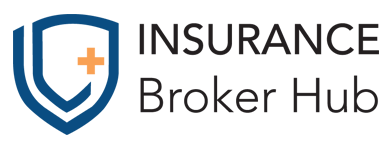Whether you consider different health insurance options within your employer’s plan or shop for a policy during the open enrollment established by the Affordable Care Act (ACA), one of the most important decisions to make concerns the extent of prescription medication coverage. Does a health insurance plan include the prescription drugs that you depend on for optimal coverage? How much more do you have to spend to go outside of a health insurance plan to get the prescription medication coverage that meets your healthcare needs? What are the most common types of prescription drugs written into most health insurance plans?
Several factors play a role in determining what type of medications receive coverage, as well as how much extra you have to pay to get the prescription medication coverage you must have to address your unique healthcare needs.
What Are the Most Common Types of Prescription Medication Coverage?
Whether you receive health insurance coverage through an employer’s plan or an individual policy purchased in the ACA-supported marketplace, you should be aware of the three most common types of prescription drug coverage options.
Meet the Deductible Obligation
An annual deductible represents the monetary value of what a health insurance policy requires you to pay out-of-pocket until your policy starts to kick in with financial assistance. For example, if your annual health insurance plan deductible is $2,000 and you receive a prescription drug bill totaling $400, you must pay the entire $400 if you have not exceeded the $2,000 value of the annual deductible.
Separate Prescription Medication Deductible
Because of rising costs, a growing number of health insurance policies include a separate deductible for prescription medications. This means you pay out-of-pocket for prescription drugs based on a deductible value that accounts just for the cost of medications. If your annual deductible for prescription medications is set at $500, the first $500 of medication prescriptions come out-of-pocket.
Paying on a Copay Basis
Some health insurance plans include prescription medication coverage that does not include a deductible. Instead, policyholders pay out-of-pocket for every prescription medication bill on a percentage basis. Each drug listed in a health insurance policy is subject to a copay, with generic drugs typically costing less than name-brand drugs. The amount of money that you spend for a copay arrangement depends on the type of medication prescribed by your physician.
The list of prescription medications covered by a health insurance policy is called a formulary. Some drugs automatically receive coverage with a healthcare provider’s prescription medication plan, while other medications receive coverage when taken for a specific medical condition.
Which Medications Does a Health Insurance Plan Cover?
When you research health insurance policies, one of the most important sections regards the drugs listed in a plan’s formulary. A health insurance policy’s formulary includes four general classifications of medications that are called “tiers.”
Tier 1
As the less costly category of prescription medications, Tier 1 drugs represent the generic varieties of most commonly prescribed drugs. Generic drugs usually provide the same health benefits that are provided by their more expensive name-brand counterparts, with the most significant difference being the open market value of generic prescription medications.
Tier 2
Tier 2 prescription medications represent the most expensive generic drugs, as well as name brand medications that a health insurance policy defines as “preferred.” Preferred name brand medications are the most demanded drugs of their respective classes. Asking your physician for advice can help you save money by choosing a generic drug instead of a preferred name-brand medication.
Tier 3
A prescribed medication that does not qualify as a preferred name brand usually finds its way onto the list of Tier 3 prescription medications. The name-brand drugs listed as Tier 3 medications cost considerably more money than the preferred brand name drugs listed in the Tier 2 category.
Tier 4
As by far the costliest tier of prescription medications, Tier 4 drugs represent the name brand products that treat rare medical conditions. Your healthcare provider writes a prescription for a Tier 4 drug only when other options listed in the other three tiers of prescriptions medications are not an option to treat the symptoms of a health issue.
To discover a health insurance plan’s formulary, access the insurance company’s website and input information such as the name of the health insurance policy. Referring to a health insurance card helps you input the right insurance policy number.
What Happens If My Plan Does Not Cover a Prescription Medication?
Despite careful planning, you might encounter the symptoms of a medical condition that requires a prescription medication that is not covered by your health insurance plan. Instead of paying a substantial amount of out-of-pocket money, you have several options to get the prescription drug you need without busting the annual healthcare budget.
First, ask your healthcare provider about other types of prescription medication options. You can request an exemption from your health insurance company to qualify for a lower-priced name-brand drug. Alternative prescription medication coverage, such as a federally funded health insurance plan, might help you avoid paying for a costly name-brand medication. You also can apply for a patient assistance program if you are uninsured or a manufacturer copay program if you have purchased a health insurance policy.
Ask Questions, Get Answers
Understandably, the concept of a formulary often doesn’t mean a lot unless you have a specific condition or have found that a specific medicine doesn’t work for you. Most medications will be included, though it’s important to know whether they are covered before you buy.
To get the best coverage at the best price, you’re going to want to work with someone who has the knowledge to guide you through the decision process to get you the most bang for your buck—and that’s where we come in.
Our free service gives you access to an independent network of national brokers who have the experience and expertise to design a plan around your needs and budget. Our network of brokers will tailor a complete solution for your health coverage and prescription needs.
Ready to get started? Simply request a no obligation health insurance quote here.


